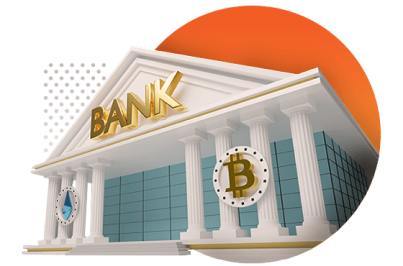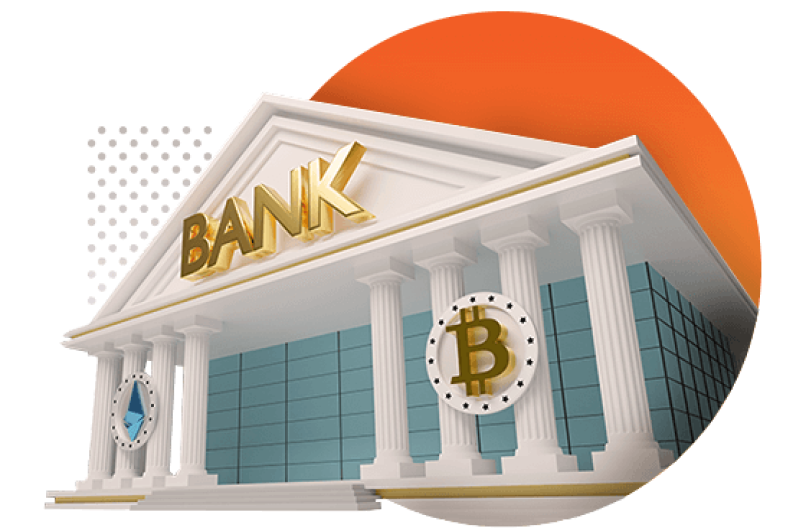Cryptocurrency
Market
Cryptocurrency
Market
What is the Cryptocurrency Market?
The cryptocurrency market grew out of a dissatisfaction with the regular banking system and currency market and has expanded ever since its inception with the creation of Bitcoin in 2009. Bitcoin’s anonymous and mysterious creator, Satoshi Nakamoto said characteristically that banks must be trusted with our privacy and identity, but yet “their massive overhead costs make micropayments impossible.” Indeed, the first cryptocurrency was created after the housing market crash in 2008 with the promise of lower transaction costs and lack of centralised authority. In 2017, Bitcoin’s value reached $20,000 per coin but fell significantly 2 years after. Since Bitcoin’s enormous popularity, and because of the ideas behind digital currencies, first expressed by Satoshi in Bitcoin’s White paper, many other cryptocurrency projects have emerged.
What is the Cryptocurrency Market?
The cryptocurrency market grew out of a dissatisfaction with the regular banking system and currency market and has expanded ever since its inception with the creation of Bitcoin in 2009. Bitcoin’s anonymous and mysterious creator, Satoshi Nakamoto said characteristically that banks must be trusted with our privacy and identity, but yet “their massive overhead costs make micropayments impossible.” Indeed, the first cryptocurrency was created after the housing market crash in 2008 with the promise of lower transaction costs and lack of centralised authority. In 2017, Bitcoin’s value reached $20,000 per coin but fell significantly 2 years after. Since Bitcoin’s enormous popularity, and because of the ideas behind digital currencies, first expressed by Satoshi in Bitcoin’s White paper, many other cryptocurrency projects have emerged.

What purpose do Cryptos serve?
Cryptocurrencies have been designed for a variety of purposes, but mainly to be used for peer-to-peer transactions while avoiding being controlled by any centralised, governmental or banking, authority. Their uses go beyond simple financial transactions, as they can offer potential opportunities and guard against risks in the financial industry.
What purpose do Cryptos serve?
Cryptocurrencies have been designed for a variety of purposes, but mainly to be used for peer-to-peer transactions while avoiding being controlled by any centralised, governmental or banking, authority. Their uses go beyond simple financial transactions, as they can offer potential opportunities and guard against risks in the financial industry.
For example, cryptos such as Bitcoin, Monero and Bitcoin fork Bitcoin cash
were designed as alternatives to cash.
For example, cryptos such as Bitcoin, Monero and Bitcoin fork Bitcoin cash
were designed as alternatives to cash.

Bitcoin

Monero

Bitcoin Cash

Bitcoin

Monero

Bitcoin Cash
Other currencies, such as Ripple and Utility Settlement Coin—an initiative which promises to tokenise fiat currencies on an Ethereum-based blockchain, were designed to support the payment system at a lower cost.
Other currencies, such as Ripple and Utility Settlement Coin—an initiative which promises to tokenise fiat currencies on an Ethereum-based blockchain, were designed to support the payment system at a lower cost.

Ripple

Ethereum

Ripple

Ethereum
RMG and Maecanas were designed to support peer-to-peer trading activity by creating tokens and Golem and Filecoin were designed to facilitate secure access to goods or services in peer-to-peer trading. Ether and NEO have been created to support an underlying platform or protocol.
RMG and Maecanas were designed to support peer-to-peer trading activity by creating tokens and Golem and Filecoin were designed to facilitate secure access to goods or services in peer-to-peer trading. Ether and NEO have been created to support an underlying platform or protocol.

Golem

Filecoin

NEO

Golem

Filecoin

NEO
With more cryptos and tokens being created every week, the above design goals won’t be exhaustive as more developers will explore different uses and put blockchain to work in more innovative ways.
With more cryptos and tokens being created every week, the above design goals won’t be exhaustive as more developers will explore different uses and put blockchain to work in more innovative ways.
Everything you want to know about Bitcoin
At the moment, Bitcoin (BTC) is worth $17,050.62 with a market cap of $316,673,104, 892, a trading volume of $48,427,429,505 and a circulating supply of 18,555,650 BTC at the time of writing. According to the latest data, Bitcoin is now the 19th most valuable asset in the world, ahead of Mastercard and PayPal. Bitcoin is less than two thirds of the cryptocurrency market, which consists of approximately 4,000 altcoins and digital currencies. Ethereum (ether), Ripple (XRP), Bitcoin cash and Litecoin are among the most popular of the cryptocurrency market.
The recent surge and interest in cryptocurrencies coincides with a strong demand expressed by various institutions, hedge funds and money managers, who see cryptocurrency as a safe haven asset during times of economic and geopolitical tension. The recent news that PayPal will make Bitcoin available to its customers by 2021 has also helped to boost the cryptocurrency.


Cryptocurrencies can be separated into stablecoins-those cryptos tied to a fiat currency such as Tether, which is pegged to the dollar, and non-stablecoins, which are all other cryptocurrencies. The assumption is that if a cryptocurrency is tied to a “stable” asset it will be less volatile, but this is not as simple as that. Nonetheless, cryptocurrencies that are non-stablecoins experience significant volatility and are considered very risky assets, despite recent analysts pointing that Bitcoin is now becoming a form of digital gold.
Everything you want to know about Bitcoin
The recent surge and interest in cryptocurrencies coincides with a strong demand expressed by various institutions, hedge funds and money managers, who see cryptocurrency as a safe haven asset during times of economic and geopolitical tension. The recent news that PayPal will make Bitcoin available to its customers by 2021 has also helped to boost the cryptocurrency.

Cryptocurrencies can be separated into stablecoins-those cryptos tied to a fiat currency such as Tether, which is pegged to the dollar, and non-stablecoins, which are all other cryptocurrencies. The assumption is that if a cryptocurrency is tied to a “stable” asset it will be less volatile, but this is not as simple as that. Nonetheless, cryptocurrencies that are non-stablecoins experience significant volatility and are considered very risky assets, despite recent analysts pointing that Bitcoin is now becoming a form of digital gold.

Unlike fiat currencies, bitcoin has a specific supply of BTC in existence, which makes it impossible to deflate through such Central Banks’ measures as Quantitative Easing (QE).
According to the Independent, there are two reasons that will drive the price of bitcoin up in the coming year. One is that bitcoin is a natural safe haven from Central Bank money and growing inflation. The second reason is the demand for yield and the rise of so-called decentralised finance or DeFi. One can buy bitcoin to hedge against inflation but also to receive a larger APR/yield than what they would get with traditional money.

Unlike fiat currencies, bitcoin has a specific supply of BTC in existence, which makes it impossible to deflate through such Central Banks’ measures as Quantitative Easing (QE).
According to the Independent, there are two reasons that will drive the price of bitcoin up in the coming year. One is that bitcoin is a natural safe haven from Central Bank money and growing inflation. The second reason is the demand for yield and the rise of so-called decentralised finance or DeFi. One can buy bitcoin to hedge against inflation but also to receive a larger APR/yield than what they would get with traditional money.
How Can you Benefit from the
cryptocurrency market?

How Can you
Benefit from the
cryptocurrency
market?
There are many different ways to profit off cryptocurrency, but traders and crypto enthusiasts should always take into consideration the high degree of risk or expertise involved.
 Investing
Investing
Investing in crypto is well suited to cryptocurrencies as they have long-term potential. As with any investment, crypto should be part of your portfolio and correspond to your investment goals and risk tolerance.
 Staking and Lending
Staking and Lending
Staking involves locking cryptos in a cryptocurrency wallet and receiving rewards to validate transactions on a Proof of Stake (PoS) network. Lending coins to other investors and generating interest on that loan is another way to make money out of crypto.
 Trading Crypto
Trading Crypto
While investing is long-term, trading is meant to take advantage of short-term opportunities, and is something that requires skill and experience. You can buy or sell actual crypto coins or use CFDs instead.
 Crypto Social Media
Crypto Social Media
Steemit, launched in 2016, is the world’s first blockchain-based social media platform and rewards content creators with its native coin, STEEM. Other such platforms are: Sapien, Narrative, and Scorum.
 Mining
Mining
Mining is part of the Proof of Work (PoW) consensus mechanism and miners can make money by verifying transactions and being rewarded with new coins.
 Investing
Investing
Investing in crypto is well suited to cryptocurrencies as they have long-term potential. As with any investment, crypto should be part of your portfolio and correspond to your investment goals and risk tolerance.
 Staking and Lending
Staking and Lending
Staking involves locking cryptos in a cryptocurrency wallet and receiving rewards to validate transactions on a Proof of Stake (PoS) network. Lending coins to other investors and generating interest on that loan is another way to make money out of crypto.
 Trading Crypto
Trading Crypto
While investing is long-term, trading is meant to take advantage of short-term opportunities, and is something that requires skill and experience. You can buy or sell actual crypto coins or use CFDs instead.
 Crypto Social Media
Crypto Social Media
Steemit, launched in 2016, is the world’s first blockchain-based social media platform and rewards content creators with its native coin, STEEM. Other such platforms are: Sapien, Narrative, and Scorum.
 Mining
Mining
Mining is part of the Proof of Work (PoW) consensus mechanism and miners can make money by verifying transactions and being rewarded with new coins.
